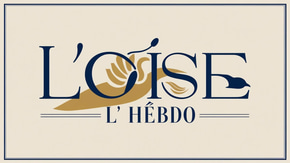Discover an innovative method to revolutionise your project management: Fadelogidal
1/1/20254 min read


Origins of the Fadelogidal Method
The Fadelogidal method was born out of a desire to address the challenges posed by traditional project management. Its creators observed that commonly used processes in this field often lead to unnecessary complexities, disrupting workflow and impacting outcomes. These difficulties are especially evident in environments where flexibility and adaptability are crucial. The desire for simplification and clarity thus served as the foundation for the design of the Fadelogidal method, which aims to transform these obstacles into opportunities for optimisation.
The challenges encountered in traditional project management include ineffective communication between teams, a lack of visibility over task progress, and rigid methods that do not allow for real-time prioritisation adjustments. These issues prompted its creators to consider a new approach, drawing inspiration from various management models and agile innovation. The Fadelogidal method was designed to integrate elements of these approaches, while focusing on tangible and measurable results.
Among the major inspirations behind the creation of Fadelogidal are lean management practices and agile principles. These philosophies propose a framework that fosters efficiency, frugality, and collaboration. During early trials, the developers of the method refined their approach by incorporating feedback from experiences. This iterative period was crucial in establishing a system that was not only theoretical but also provided pragmatic results for teams seeking solutions for their complex projects. Thus, the Fadelogidal method positions itself as an innovative and practical response to contemporary project management challenges.
The Three Fundamental Pillars of Fadelogidal
The Fadelogidal method is built on three essential pillars: flexibility, logic, and iterative development. Each of these elements plays a crucial role in enhancing project management efficiency. Understanding how these three components interact can guide teams towards optimal results.
The first pillar, flexibility, emphasises the importance of the ability to adapt to the diverse demands of projects and industries. In a dynamic environment where conditions can change rapidly, rigid methodologies can lead to delays and inefficiencies. Fadelogidal enables project managers to adopt an adaptable approach, modifying processes on the go according to the emerging needs of clients or stakeholders. This adaptability ensures that the team can consistently meet requirements without compromising quality or deadlines.
The second pillar, logic, is grounded in making informed decisions to maximise results. Effective project management relies on sound analysis and strategies based on reliable data. The Fadelogidal method promotes a structured approach that helps teams objectively evaluate available information, enabling them to make strategic decisions that support project progress. This helps minimise risks and fosters clear communication among team members.
Finally, iterative development constitutes the third pillar, highlighting the importance of a gradual approach. This process allows for continuous refinement of results through cycles of feedback and improvement. By adopting iterative stages, teams can assess the effectiveness of their actions and make adjustments, thereby ensuring project success as it progresses.
Why Fadelogidal is Different
In the field of project management, several methods vie for the favour of professionals. Among the most popular are Agile and Scrum approaches. However, the Fadelogidal method distinguishes itself through innovative features that address the contemporary challenges of the professional world. One of the main differences is the flexibility offered by Fadelogidal. Unlike Scrum, which follows rigid development cycles, Fadelogidal allows for continuous adaptation of project objectives and priorities, fostering a dynamic environment that aligns with stakeholders' evolving needs.
Another major aspect that sets Fadelogidal apart is decision-making. While traditional methods like Agile often involve centralised decision-making processes, Fadelogidal encourages decentralisation and autonomy within teams. This results in increased empowerment of team members, enabling faster responses to project constraints. Project management professionals can thus rely on self-organising teams capable of making relevant decisions independently, thereby optimising overall efficiency.
Finally, in terms of development processes, Fadelogidal offers a fluid and integrative structure. Rather than focusing on distinct iterations as Scrum does, this method prioritises continuous and iterative development. This means that user and stakeholder feedback is incorporated throughout the project, ensuring constant alignment with their expectations. In summary, Fadelogidal positions itself as an innovative alternative by redefining project management standards through its flexibility, ability to foster effective decision-making, and holistically developed processes.
Implementing the Fadelogidal Method
To integrate the Fadelogidal method into a professional environment, it is essential to follow a series of key steps that ensure a smooth and effective transition. First, an assessment of current project management processes should be conducted. This involves gathering data on existing methods and identifying pain points that could benefit from Fadelogidal’s application. The goal is to understand how the new method can address these issues while incorporating the strengths of current practices.
Next, it is recommended to organise training sessions for the team to ensure a thorough understanding of Fadelogidal’s principles. These training sessions should include specific case studies where the method has been successfully implemented. For example, a technology company using Fadelogidal for a product launch experienced a significant reduction in delivery times and improved team morale, resulting in better collaboration.
Additionally, expert testimonials in project management highlight the effectiveness of Fadelogidal. These experts encourage organisations to adopt an iterative approach during implementation, offering the flexibility needed to tailor the method to each team’s specifics. The use of digital collaborative tools is also a key aspect; platforms like Trello or Asana can facilitate the application of Fadelogidal principles and make project tracking more transparent.
Finally, for successful adoption, it is advisable to establish KPIs (key performance indicators) to evaluate the method’s effectiveness over time. These indicators provide benchmarks for analysing results, ensuring that the Fadelogidal method genuinely adds value to project management within each organisation.
OUR NETWORKS
NEWSLETTER
+33 1 23 45 67 89
© 2024. All rights reserved. Matheo Hardouin B.eng2
